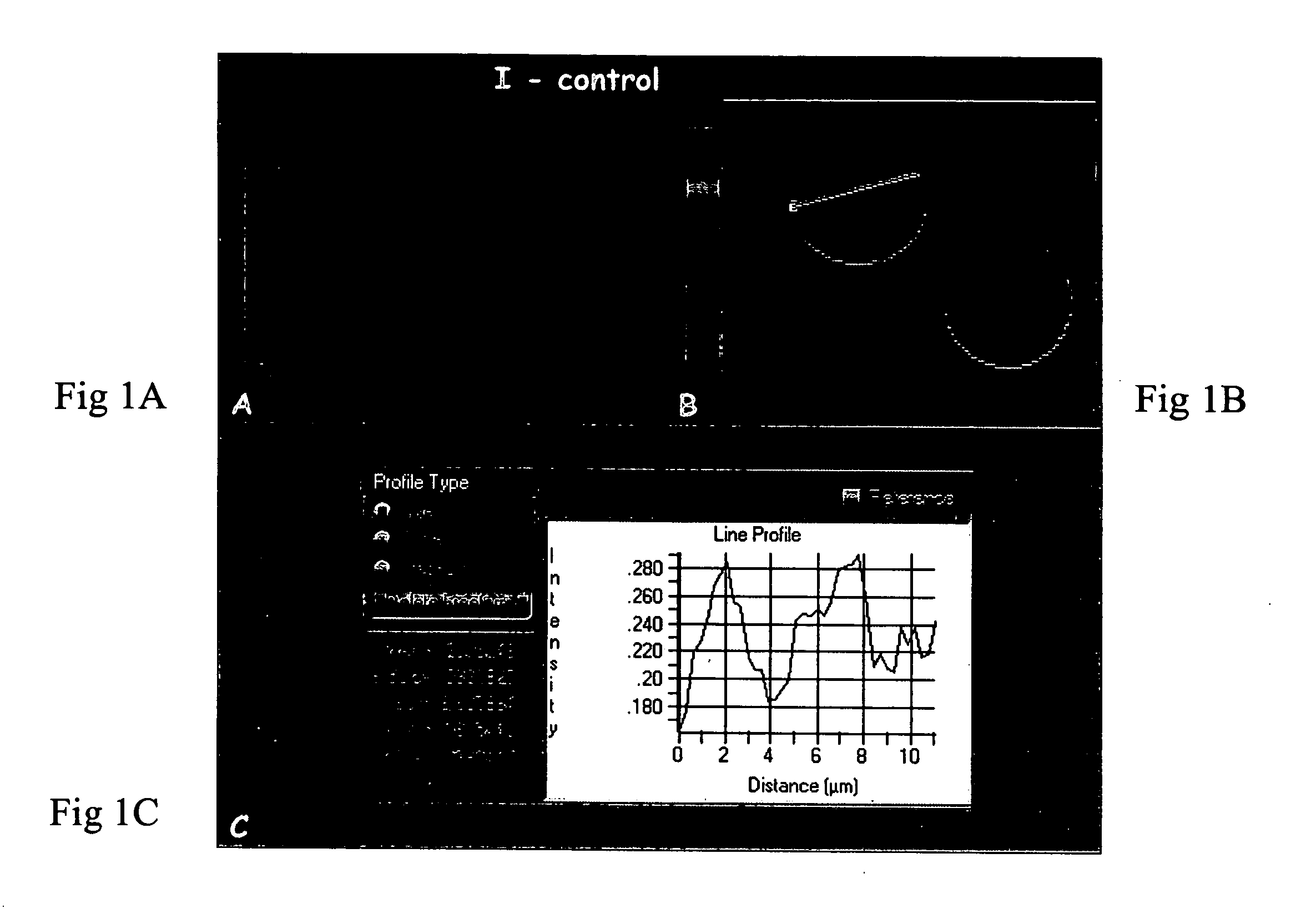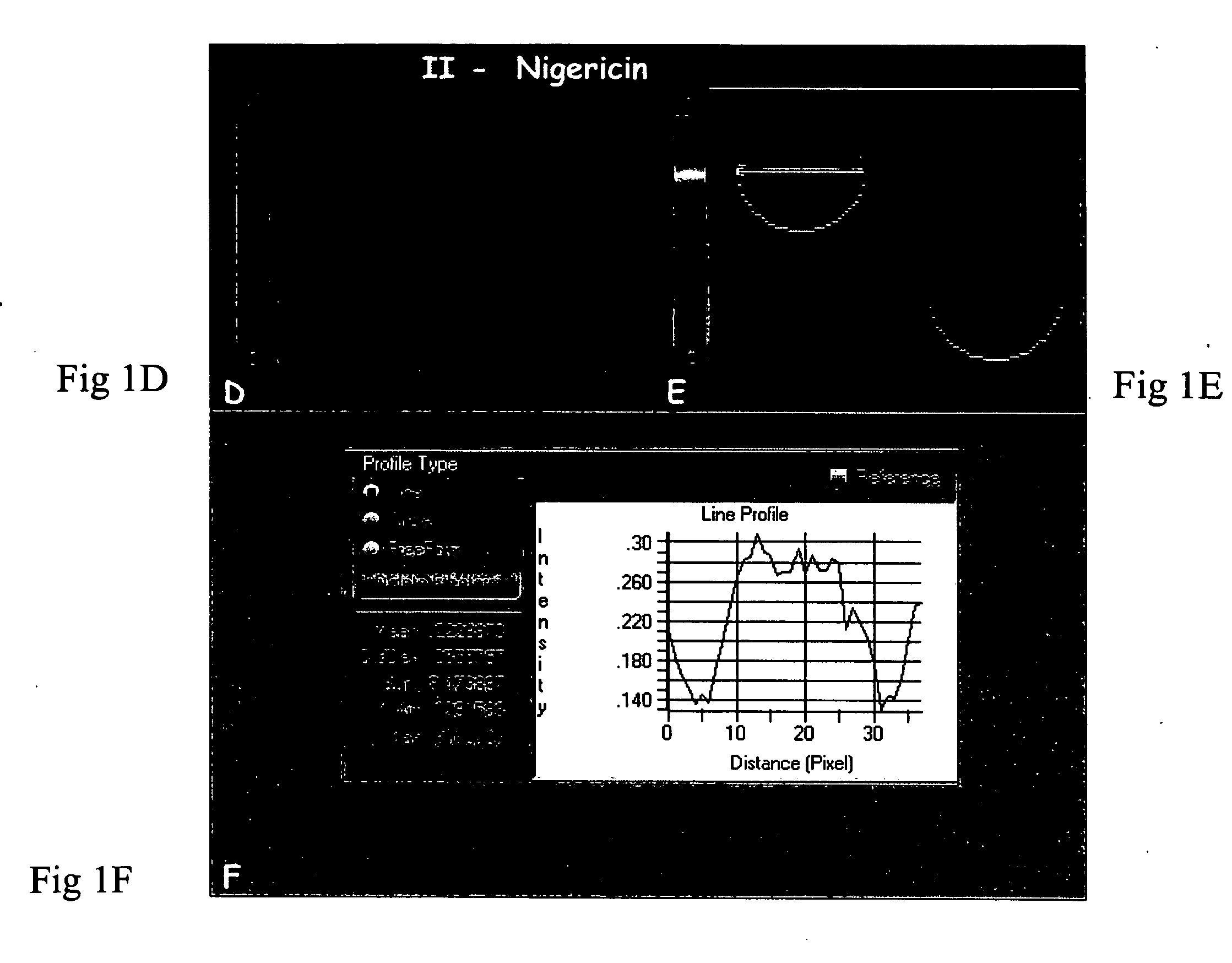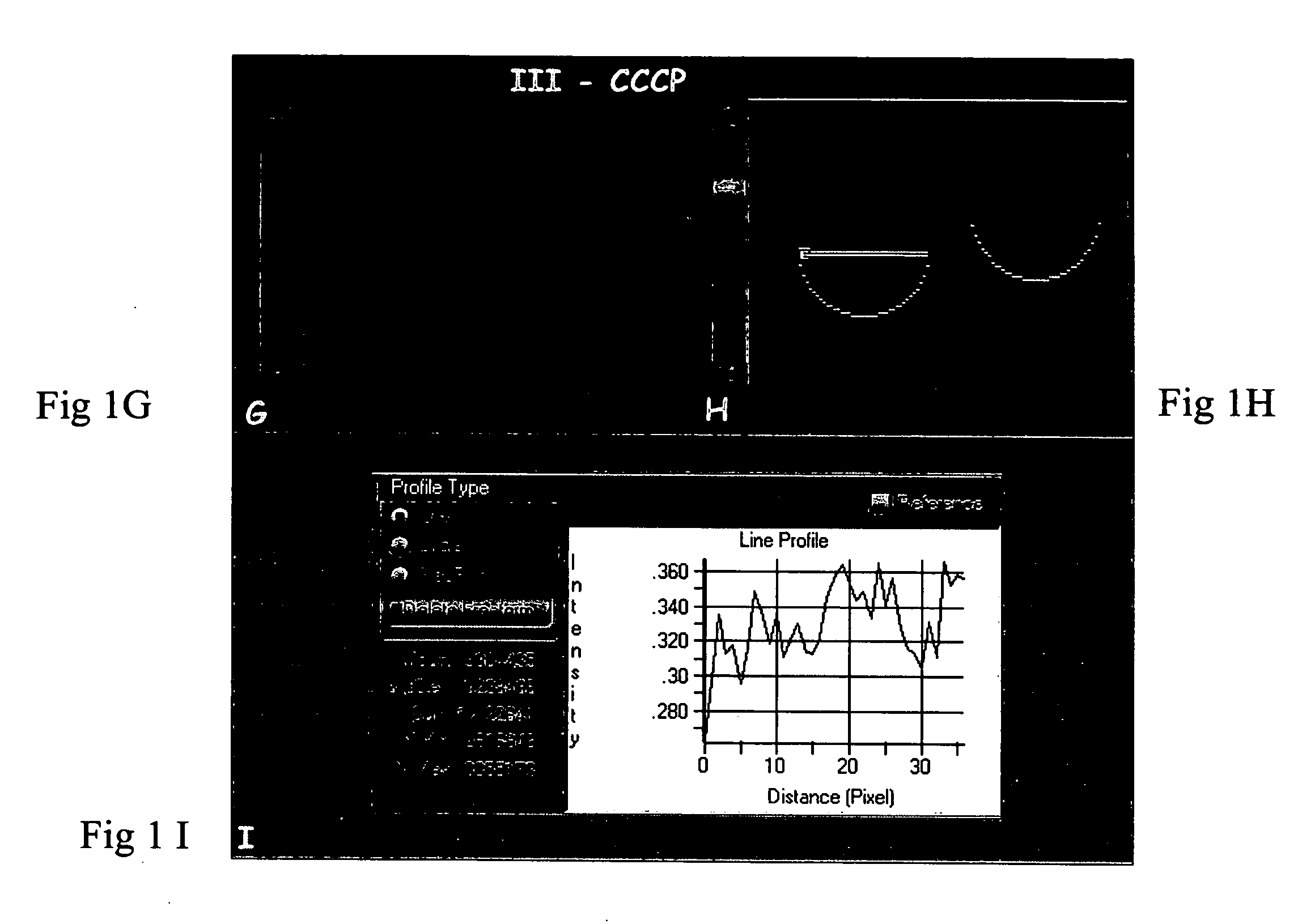Method and system for measuring membrane potential based on fluorescence polarization
a fluorescence polarization and membrane potential technology, applied in the direction of instruments, material testing goods, biochemistry apparatus and processes, etc., can solve the problems of inability to determine the absolute value of membrane potential, inability to detect background noise, and inability to accurately measure fluorescence polarity, etc., to achieve simple, accurate and inexpensive results
- Summary
- Abstract
- Description
- Claims
- Application Information
AI Technical Summary
Benefits of technology
Problems solved by technology
Method used
Image
Examples
example 1
Fluorescence Polarization measurements in U937 Cells Stained with Rh123
[0147]Fluorescence polarization (FP) evaluation was conducted using U937 promonocytic cells under the following physiological conditions: control, following treatment with CCCP and following treatment with Nigericin. All the cells were stained with Rh123, rinsed, loaded in cell chips and then measured.
[0148]Materials and Methods
[0149]Cell treatment: U937 promonocytic cells were treated with an oxidative phosphorylation uncoupler CCCP (commercially available from Sigma-Aldrich) at a concentration of 5 μM and Nigericin (commercially available from Sigma-Aldrich) at 5 μg / ml for 15 minutes.
[0150]Cell staining: Cells were stained by treating with 3-13 μM Rh123 and loaded in cell chips.
[0151]Fluorescence polarization measurement: Transmitted light images and fluorescence images were obtained parallel to the excitation field (excitation and emission polarizers set at 0°), and perpendicular to it, with the excitation pol...
example 2
Fluorescence Lifetime Measurements in U937 Cells Stained with Rh123
[0161]Fluorescence lifetime (FL) is essentially a differential parameter, implying, that if the emission is heterogeneous, it is obtained from a linear sum of pure decay components; therefore, analyzing results of FL measurements will probably indicate the existence of several probes in a sample, even in situations where the sample was stained with only one type of dye. This latter instance, probably, will happen when the probe, distributed in different cell regions, “senses” a different environment in terms of chemo-physical properties, that may possibly change the spectroscopic aspects of the marker and, among others, its' fluorescence lifetime. This situation, also, may be derived from the fact that the dye concentration in the cell is heterogeneous and, as such, tends to accumulate in certain areas more than others.
[0162]The distribution of decay components may also change as a result of treatment under varied ph...
example 3
Spectroscopic Aspects of Rh123 in U937 Cells in Isolated Mitochondria
[0178]The following example describes a series of experiments which were performed in order to understand the spectroscopic aspects of Rh123 in isolated mitochondria of U937 cells.
[0179]Firstly, the direct influence of CCCP and Nigericin on Rh123, were tested.
[0180]Secondly, the direct influence of changing factors in the cell during activation, for example, pH and viscosity, on the lifetime and / or polarization of Rh123, was tested.
[0181]Thirdly, spectroscopic properties of the whole cell and of a suspension of ruptured cells were tested, in order to acquire information about the influence of the whole cell on the intra-cellular marker, while under the influence of various treatments.
[0182]In order to distinguish between the cell's influence and the mitochondria's influence, the same experiments with isolated mitochondria were repeated. In all the experiments, the fluorescence intensity was calculated through integ...
PUM
 Login to View More
Login to View More Abstract
Description
Claims
Application Information
 Login to View More
Login to View More - R&D
- Intellectual Property
- Life Sciences
- Materials
- Tech Scout
- Unparalleled Data Quality
- Higher Quality Content
- 60% Fewer Hallucinations
Browse by: Latest US Patents, China's latest patents, Technical Efficacy Thesaurus, Application Domain, Technology Topic, Popular Technical Reports.
© 2025 PatSnap. All rights reserved.Legal|Privacy policy|Modern Slavery Act Transparency Statement|Sitemap|About US| Contact US: help@patsnap.com



